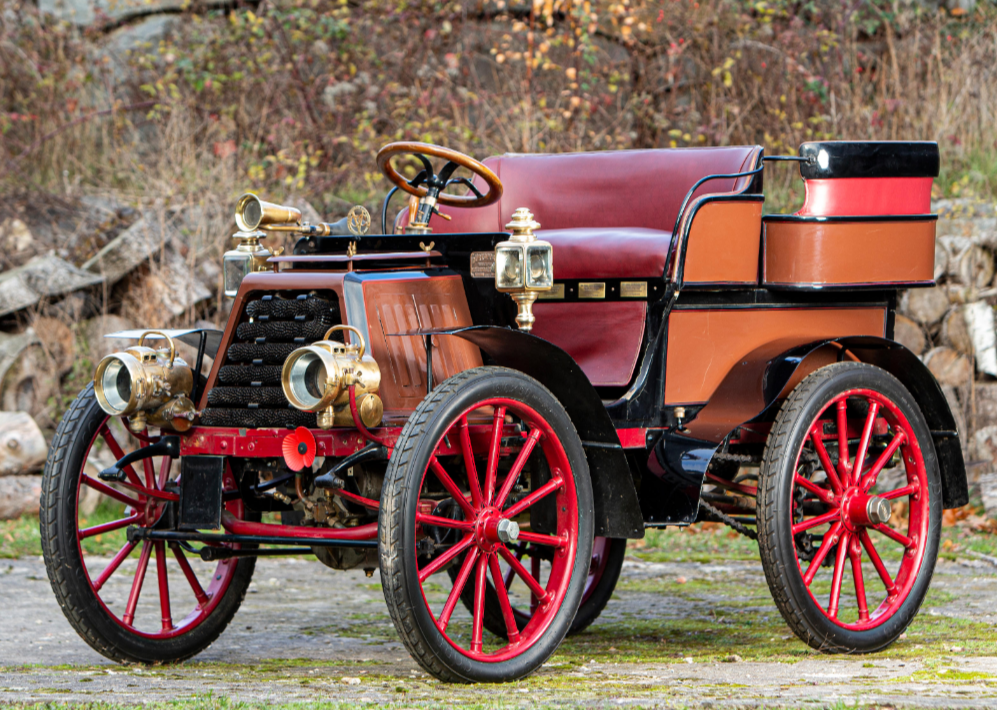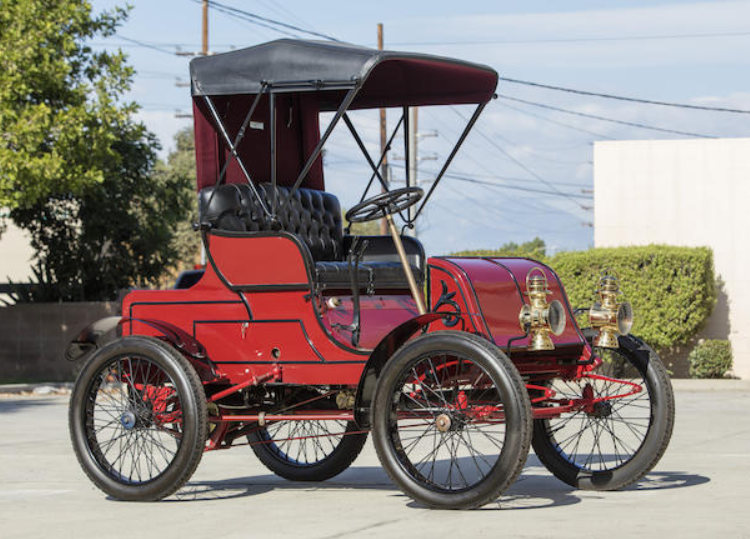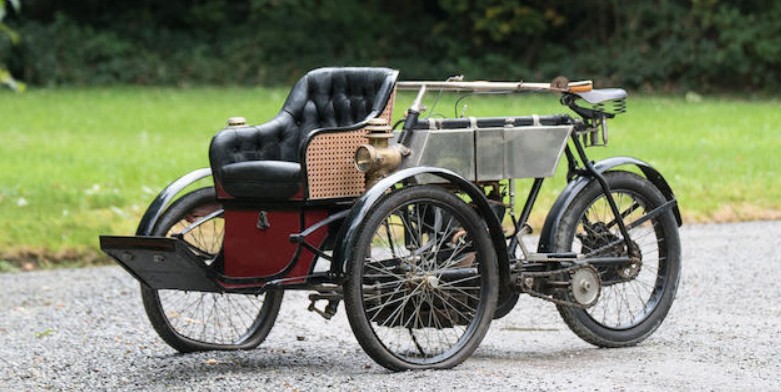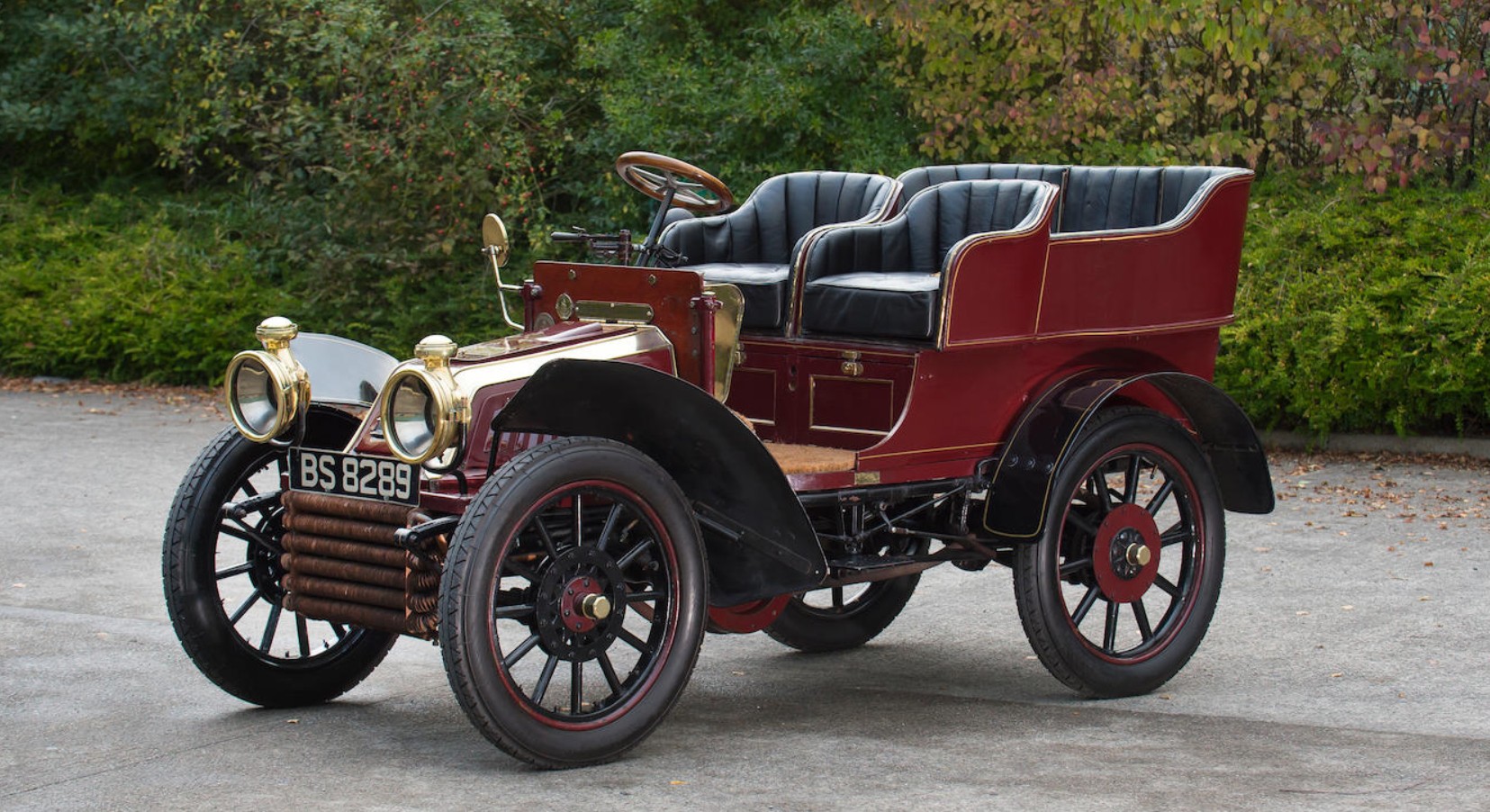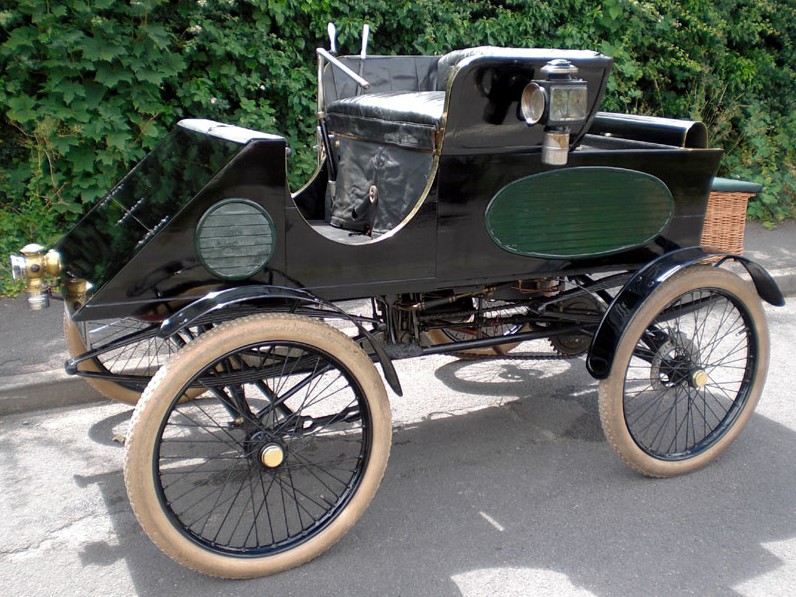1901 Crestmobile Model B 3½HP Runabout
Offered by Bonhams | Los Angeles, California | November 11, 2017

Photo – Bonhams
Founded in 1900 in Cambridge, Massachusetts, the Crest Manufacturing Company was a supplier to other early automobile manufacturers. They finally realized that they built so many parts that they could just build their own car – and so they did. The first “Crest”-branded automobiles were three-wheelers but by 1901 the four-wheeled Crestmobile was available.
Three models were offered at the start, with the mid-range Model B sporting a 3.5 horsepower single-cylinder engine mounted out front that can be pull-started with a leather strap. This car resembles many other cars from the period, including the Toledo Steam car below.
Part of this particular collection since 1943, the Crestmobile you see here has been restored (though the date is unknown). Crestmobiles were only offered through 1905 before the marque disappeared. This one, perhaps the finest in existence, should sell for between $30,000-$40,000. Click here for more info and here for more from this sale.
Update: Sold $39,600.
1902 Toledo Junior Runabout
Offered by Bonhams | London, U.K. | November 3, 2017
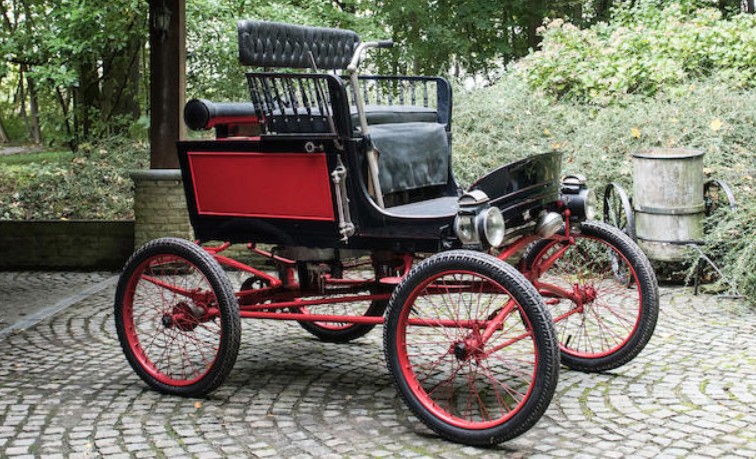
Photo – Bonhams
Okay, so maybe this doesn’t look exactly like the Crestmobile above, but you get the idea that they are pretty similar – except that this is a steam car. The Toledo was built by the International Motor Car Company of Toledo, Ohio, between 1901 and 1903. Beginning in 1904, once the company had been acquired by Col. Albert Pope, the cars were known as the “Pope-Toledo.”
Five different steam cars were offered by Toledo in 1902, with this Junior Runabout being the cheapest, costing $800 when new. This was also the last year the company offered steam cars, turning to more conventionally-styled gasoline-powered cars in 1903 before their acquisition.
This car sports an older restoration and it probably hasn’t been used all that much. It will require a little attention (and a boiler inspection) before use. This is a great opportunity to acquire a well-built early steamer at a fraction of the cost of a Stanley. It should bring between $33,000-$40,000. Click here for more info and here for more from this sale.
Update: Sold $34,673.


